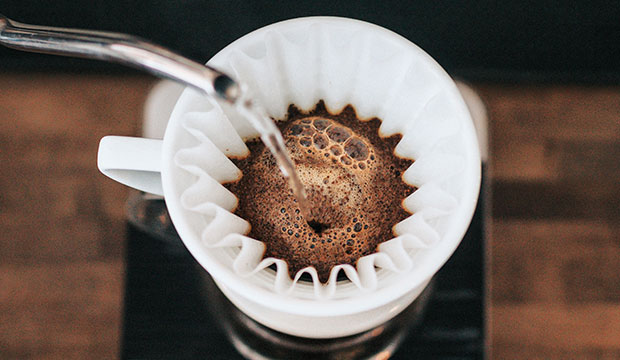
2-4 Workdays Article No. 1590
Aroma(s) : Nutty, Floral
Article No. 1590

2-4 Workdays Article No. 1581
Aroma(s) : Floral, Fruity
Article No. 1581

2-4 Workdays Article No. 1099
Aroma(s) : Malty, Fruity
Article No. 1099

2-4 Workdays Article No. 1546
Aroma(s) : Chocolaty
Article No. 1546

2-4 Workdays Article No. 10280
Aroma(s) : Nutty, Fruity
Article No. 10280

2-4 Workdays Article No. 11052
Aroma(s) : Chocolaty, Nutty
Article No. 11052

2-4 Workdays Article No. 11371
Article No. 11371

Unavailable Article No. 11372
Article No. 11372
The History of Filter Coffee
Filter coffee has an ancient history. This system for leaching coffee was invented over 100 years ago in Germany by Melitta Bentz, who perfected the paper filter still used today for this preparation, allowing water to slowly percolate through the coffee blend, retaining the ground powder.
Although the taste for filter coffee has never taken root in the Belpaese, its popularity outside the peninsula is indisputable. Today filter coffee emerges more and more in Italy, where fans of the drink are beginning to appreciate its unique taste and texture.
The "pour over" method, also known as "V60" thanks to the Hario system, in which the cup for the filter has the shape of a V with a 60-degree angle, is the most widespread in Northern Europe and the United States. The method produces a soft and long coffee without compromising the level of caffeine.
Be careful not to confuse filter coffee with American coffee, a coffee with a vaguely similar appearance, but which is actually completely different and is often obtained simply by adding hot water to an espresso.
But how is it prepared then?
First of all you need a filter holder, a paper filter, a carafe to let the leachate coffee flow into, and a kettle.
For the preparation everything starts from the choice of a good blend, ground in the correct way (this point will be discussed in more detail below). For each cup you want to brew, add about 10 g of ground coffee into the filter. This corresponds to about one and a half tablespoons of ground coffee.
Hot water is used first to slightly moisten the coffee in the filter and then, about half a minute after it has swollen, more hot water is poured evenly over the coffee, letting it flow slowly into the container below.
The infused beverage is therefore not extracted by pressure as in the classic Moka. The process is slower and more delicate and requires more patience and attention throughout the entire process, to prevent gross errors that will compromise an otherwise light and delicious drink.
The importance of a good blend
When it comes to filter coffee, choosing the right blend is particularly important.
By using gravity instead of pressure, the coffee powder must have the "right grain size". Too finely ground coffee will give the filter coffee a burnt taste, while too coarsely ground coffee will not hold water well and extraction will take place too quickly. The end result will be bland and watery coffee. Medium ground lends itself very well.
But now you have to choose the roast. Here too, it is important to make a conscious choice. The best roasts are clear or medium roasts. Thanks to the slower extraction, filter coffee naturally enhances the bitterness of the drink, which tends to overwhelm the acidity. For this very reason, too much roasting could affect the bitterness too much.
To simplify the choice, we recommend using a specific filter coffee blend, prepared and selected precisely to get the most out of this extraction method.
In this section we offer you different varieties of coffee, Italian and foreign roasters, specially created to give the best results in this type of preparation.
From the best known illy N Filtro, to the Hamburg-based Carroux Crema, to the famous Sant'Eustachio Filtro.
Filter coffee is a different experience

There is a world of culture behind the preparation of filter coffee. The manual skill, the waiting, and the attention to detail are the fundamental elements for the success of a good coffee, and it is exciting to discover this new world and to appreciate and master this extraction system.
The drink offers a completely different experience compared to the classic espresso, not only in taste but in enjoyability.
A long coffee, with a less full-bodied and creamy consistency, but lighter.
A perfect, long-lasting and different experience, for long breaks or to mark the moments of pleasure or work with a sip of hot, pleasant and spicy coffee, without forgetting of course the charge of caffeine.
Filter coffee lends itself very well to experimentation and will reward every effort with its unique flavor for those who have the courage and curiosity to try something different, because it is the ideal coffee for those who love to give their drink a unique character, especially if you add ingredients such as milk or spices.
With filter coffee you get a new experience, which enhances all the nuances of coffee, celebrating its most sincere and authentic flavor notes.



